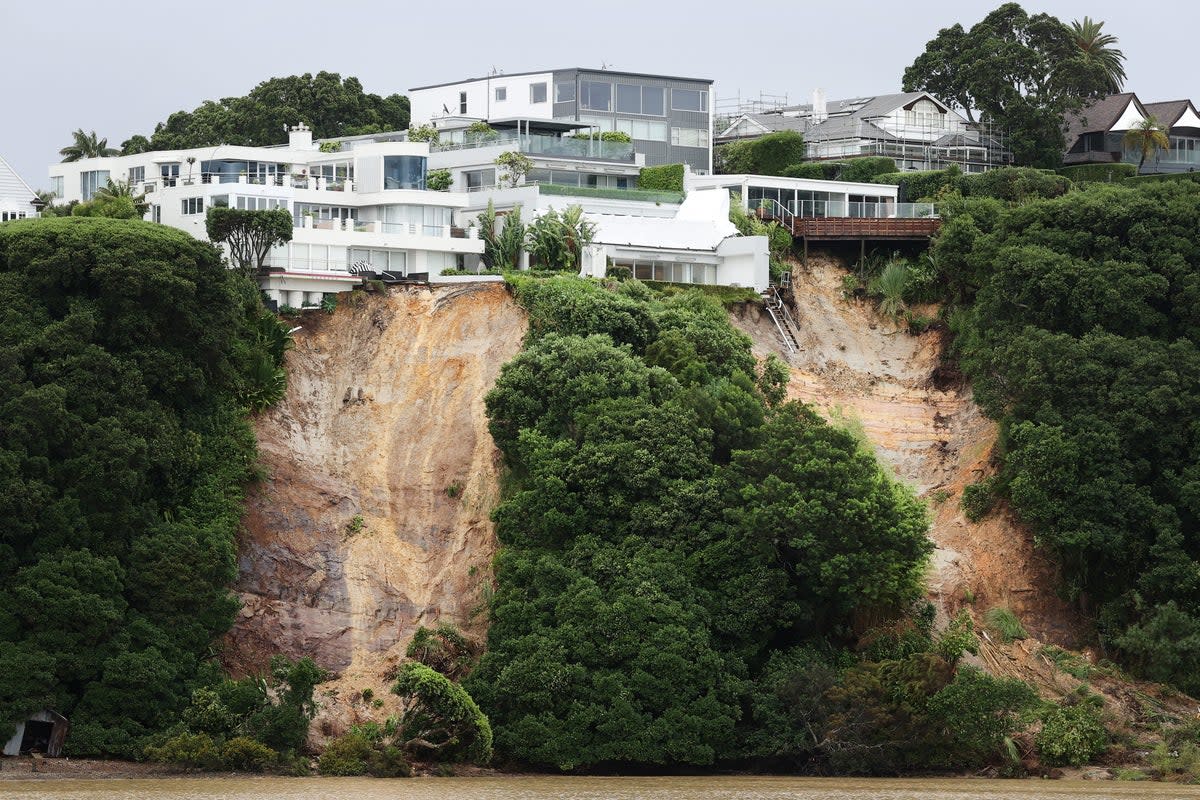Flood-stricken Auckland begins clean-up after New Zealand’s ‘biggest non-earthquake event’

Almost 200 homes and businesses have been deemed unsafe to enter in flood-stricken Auckland as the clean-up begins following New Zealand’s “biggest non-earthquake event”.
More than 600 cars have been destroyed by flood waters and 168 homes “red-stickered”, according to local media, after record rainfall on Friday killed four people and caused widespread damage.
The unprecedented rain has been exacerbated at least in part by climate change, authorities said. A house collapsed down a cliff, injuring three people, in a beach settlement near Auckland on Wednesday.
A heavy rain watch has been issued by forecasters for another night in Auckland, the country’s largest city, while a state of emergency remains in place.
Finance Minister Grant Robertson told reporters on Wednesday that the deluge would be the “biggest non-earthquake event” that the country had ever recorded, in terms of insurance.
At least 20,000 claims have already been made, New Zealand’s Insurance Council told the Guardian.
The Northland region lifted a state of emergency declaration on Wednesday after an overnight storm didn’t turn out as bad as feared.
Ron Devlin, the regional manager for Fire and Emergency New Zealand, told reporters that crews had dealt with more than 50 weather-related callouts Wednesday morning in and around Auckland.
“But I want to stress the rain didn’t reach the point that was predicted, which is a great thing, and so we’re quite comfortable with the amount of events that we’re attending,” Mr Devlin said.
“This is business as usual for fire and emergency.”
Northland, located three hours north of Auckland, had declared the emergency on Tuesday in anticipation of a deluge, a move that gives authorities extra powers.
“As it eventuated, these powers were not required and there is no need for the emergency declaration to continue,” said Graeme MacDonald, the group controller for Northland Civil Defense Emergency Management.
In Auckland, officials had earlier closed schools for the week and asked people to work from home if possible as the cleanup continued. Schools are expected to re-open on Thursday.
On Friday, the amount of rain that would typically fall during an entire summer hit in a single day.
At one point that evening, more than 15 centimeters (6 inches) of rain fell in three hours.
Bus and rail services have been disrupted, and a number of major roads in the city closed. There had been 20 slips on the rail network.
Resident Cassie Clark examined flood damage to one Auckland home on Tuesday, saying everything was destroyed.
“The beds, the linen, the clothes, the couches, everything inside is ruined. The actual walls are damaged, it’s all soft now, it’s not going to hold,” Clark told Television New Zealand. “Everything that this family has had over the last 10 years has been taken away from them in a split second.”
The Minister for Emergency Management Kieran McAnulty has announced an extra $1 million (£520,000) of funding for Auckland’s Mayoral Relief Fund to help communities.
“This is the most significant contribution to a Mayoral Relief Fund ever and ensures that funding is being provided to the affected communities as quickly as possible,” Mr McAnulty told reporters.
So far this year the National Institute of Water and Atmospheric Research (Niwa) said Auckland has already recorded 38 per cent of its usual annual rainfall – and 769 per cent of its average January rainfall.

 Yahoo News
Yahoo News 
